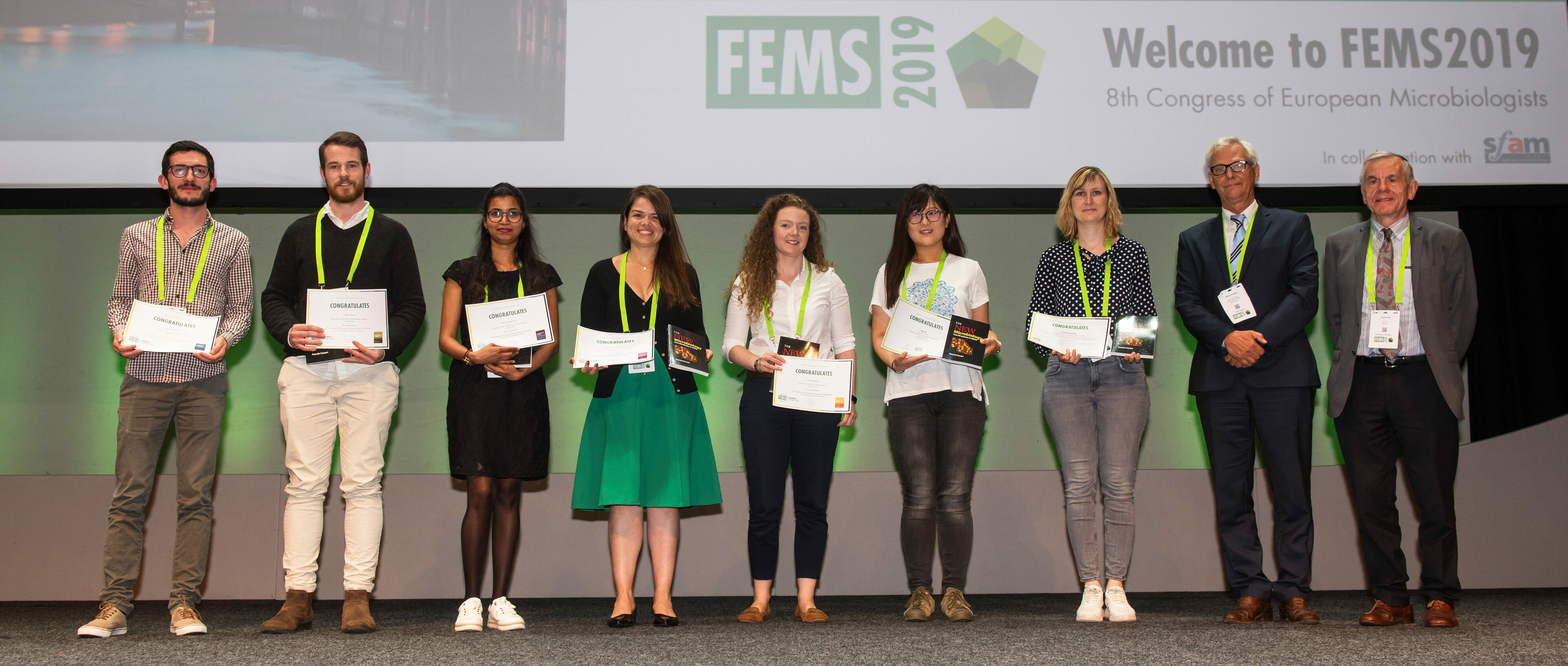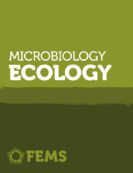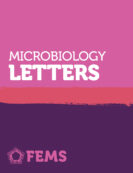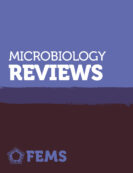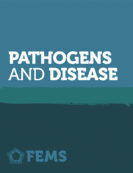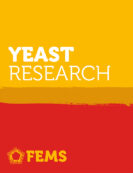FEMS2019 Congress: FEMS Journal Poster Prizes
FEMS2019 Congress
The FEMS2019 Congress was held in Glasgow from 7-11 July 2019. Ecah of the FEMS Journals awarded a poster prize during the Congress. The winners were: Joshua Hamm (FEMS Microbiology Ecology), Roseanne Holanda (FEMS Microbiology Letters), Rekha Gopalan Nair (FEMS Microbiology Reviews), Guillaume Carrillo (Pathogens and Disease), and Ainsley Beaton (FEMS Yeast Research). Read interviews with the winners of the FEMS Poster Prizes below.
FEMS Microbiology Ecology winner: Joshua Hamm
What is your current position and what was your scientific journey to get there?

PhD Student in the Cavicchioli Lab. I initially studied Mechatronic Engineering when I first left school but found working in the private sector didn’t give me the job satisfaction I wanted. I transferred into Medical Science with the intention of either going on to practice Medicine or to go into medical research.
I decided early on that my preference was for research, though I felt like there was more potential for me to make an impactful contribution in Environmental research than in Medical research.
During my Undergraduate degree I began to volunteer in Professor Cavicchioli’s lab as the research was interesting to me and I wanted to get more hands on experience.
At the conclusion of my degree I was offered the chance to work on the Nanohaloarchaeota for my Honours project, which I took, and it has since turned into the focus of my PhD.”
Could you describe the research your poster covered?
Nanohaloarchaeota are halophilic members of the DPANN superphylum, an archaeal superphylum characterised by small cells (~500nm), reduced genome sizes (<1Mbp), and a propensity to engage in symbiotic interactions with other Archaea.
Since their discovery in 2011, data on Nanohaloarchaeota has been restricted to cultivation independent approaches, with cultivation attempts failing to yield positive results. Despite the absence of cultivated representatives, Nanohaloarchaeota were predicted to be free-living as they possess larger than typical genomes for DPANN Archaea.
The poster covered our work in successfully cultivating an antarctic species of Nanohaloarchaeota, Candidatus Nanohaloarchaeum antarcticus, and demonstrating that this Nanohaloarchaeote is an ectosymbiont of an antarctic haloarchaeon, Halorubrum lacusprofundi. Ca. Nha is incapable of independent growth and engages in intimate interactions with Hrr. lacusprofundi including fusion of the respective cell’s membranes and likely sharing of cytoplasm.
In addition to this, genomic analyses identified a large protein (~6000aa) that possesses functional domains indicative of a role in mediating these interactions. Homologues were identified in other nanohaloarchaeal genomes and also in other DPANN organisms suggesting an ancestral origin for the protein. Proteomics confirmed expression of the protein as a single unit, making it the second largest archaeal protein identified. Establishment of co-cultures of Ca. Nha and Hrr. lacusprofundi provides a potential model system for investigating both Nanohaloarchaeota and also the DPANN Archaea in general. This is partially due to Hrr. lacusprofundi being genetically manipulatable, which is not the case for any other hosts of DPANN Archaea.”
What do you hope to focus your research on in the future?
I would like to continue work on the DPANN Archaea, primarily in cultivation. With the cultivation of Ca. Nha. antarcticus only 3 out of 8 phyla of the DPANN Archaea have cultivated representatives. With cultivation of additional DPANN lineages will come an increased understanding of both, the contributions of these ubiquitous Archaea to global ecosystems, and of the development of archaeal symbioses.”
FEMS Microbiology Letters winner: Roseanne Holanda
What is your current position and what was your scientific journey to get there?

I have recently started a position as a research assistant leading the Mineral Biotechnology Laboratory of SENAI Innovation Institute for Mineral Technology (ISI-TM), located at the Pará State, in the Eastern Amazon region of Brazil.
I obtained my Bachelor´s degree in Food Engineering, in 2010, at the State University of Campinas (UNICAMP), São Paulo, Brazil, and as an undergrad student I had a 2 years research internship at UNICAMP’s laboratory of bioactive compounds.
However, I only started the Master´s in 2013, at Vale Institute of Technology for Sustainable Development (ITV-DS), at the Pará State, in Brazil. At that time, I was interested in the microbial diversity of cocoa beans fermentation during chocolate production, looking at the dynamics of the microbial population and how parameters such as pH, temperature, cocoa variety and farmers’ practices affected the cocoa microbial profile during the fermentation stage.
Halfway through the Master´s I was invited to pursue a PhD at Bangor University in North Wales, UK, under supervision of the Prof. David Barrie Johnson, with scholarship provided by the Brazilian´s National Council for Scientific and Technological Development (CNPq) program: “Science Without Borders”. The objective of my PhD project was to investigate novel prokaryotes with potential application in biohydrometallurgy.
After completing my PhD, I returned to my hometown, in Brazil, and few months later I started my position at SENAI Innovation Institute. ”
Could you describe the research your poster covered?
My poster covered the enrichment, isolation, characterization and phylogeny of a novel acidophilic bacterium capable of respiring zero-valent sulfur, and thus generating hydrogen sulfide (H2S) as a by-product, at low pH (1.8 – 5.0) conditions.
The novel isolate was distantly related to known sulfidogens and found to be a representative of a novel genus of Firmicutes. Moreover, to harness the capabilities of the novel bacterium, a system was devised (a bioreactor) to remove and recover transition metals from circum-neutral pH mine waters. The bioreactor was populated with the novel bacterium and other acidophilic bacteria and fed continuously with zinc-contaminated water collected from an abandoned metal mine in the north-west of England. As a result, >99% of zinc was removed from solution as zinc sulfide, while the novel bacterium was an abundant member of the microbial population.”
What do you hope to focus your research on in the future?
My research goals and The SENAI Innovation Institute´s mission is to apply the concepts of Circular Economy to the mining sector through the development of zero waste and “greener” solutions by using innovative biotechnology approaches to reduce the environmental impact of mining operations.
Currently, I am focused in the development of biogenic acid generating systems using extremophilic microorganisms in order to bioremediate the alkaline bauxite residue, from alumina production, for further reuse.
I hope to continue developing novel bioremediation strategies and industrial processes that harness the capabilities of extremophilic microorganisms, and thus to continue studying novel extremophiles involved in biogeochemical transformations, their physiology (and its genetic and molecular basis) and their interactions with the surrounding environment.”
FEMS Microbiology Reviews winner: Rekha Gopalan Nair
What is your current position and what was your scientific journey to get there?

I am a final year PhD student at Laboratoire des Interactions Plantes-Microorganismes (LIPM), INRA, Toulouse, France. I began my bachelor studies (Bachelor of technology in Biotechnology) in Chennai, India which was a four-year program including a mandatory six-month thesis project.
I was lucky to find a position at King Institute of Preventive Medicine, Chennai, where I did my six-month project studying the efficacy of maturation for the preparation of polyvalent anti- snake venom and the biological activity of cobra venom. It was at this place that I realized that I wanted to continue my career in research abroad and there began my scientific journey.
After successful completion of the bachelor studies, I decided (with the help of my sister) to look for postgraduate studies in Europe and I finally found the right course (Master of Science in Molecular biotechnology) at University of Skövde, Sweden.
Towards the completion of masters degree, I was affirmative about doing a PhD and I wanted to find somewhere in Europe. I saw the advertisement online from INRA funded by Labex Tulip consisting of 11 projects of various domains of which only 4 projects were selected. I was interested in 2 of the projects: one focused on molecular biology of plant and the other was mainly on bacteria. I was fortunate to have obtained the project titled “Role of epigenetic modifications in a plant pathogen during host jump and adaptation” under the supervision of Dr Stéphane Genin and Dr Alice Guidot.”
Could you describe the research your poster covered?
Ralstonia solanacearum, the causal agent of bacterial wilt disease infects more than 250 plant species. The ability of this pathogen to adapt to many host plants and counteract plant resistance is supported by field observations reporting strains more aggressive and able to colonize novel hosts.
To investigate the genetic/epigenetic bases of host adaptation in R. solanacearum, experimental evolution was conducted with GMI1000 strain on tomato Hawaii 7996 plant, a reference cultivar resistant to bacterial wilt, by serial passage experiments (SPE) during 300 bacterial generations. The experimentally evolved clones are better adapted to tomato Hawaii. Hypotheses: Both genetic and epigenetic modifications could explain fitness gain of these clones.
The global objective is to investigate the role of genetic/epigenetic (DNA methylation) modifications in R. solanacearum during experimental adaptation to resistant tomato Hawaii plant. Competitive index (CI) experiment was conducted to analyze fitness gain of the evolved clones in planta. The 25 tested evolved clones had increased in planta fitness compared to the ancestral clone. Genomic sequence analysis was performed by Illumina sequencing. Whole genome sequencing of evolved clones showed between 0 and 2 polymorphisms per clone. Methylome analysis was done by PacBio SMRT sequencing and bisulfite treatment/Illumina sequencing and RNA-seq by transcriptome analysis which are currently being run.”
What do you hope to focus your research on in the future?
I would like to pursue my career in academic research. Today, I am not sure if I will be able to work on the same project, for I would like to explore and learn other domains. However I would like to work on other host-microbe interactions and possibly projects with direct field application.”
Pathogens and Disease winner: Guillaume Carrillo
What is your current position and what was your scientific journey to get there?

I currently am a 3rd year PhD student in the lab of Pr. Patricia Doublet and Pr. Sophie Jarraud, in the International centre for infectiology research in Lyon, France, under the supervision of Dr. Elisabeth Kay
My scientific journey began a bunch of years ago I guess, as I have been passionate about learning about Nature for as long as I can recall. But it wasn’t before I started my Bachelors in the Université Claude Bernard in Lyon that I got to learn about and become fascinated by microbiology.and Dr. Vincent Daubin.I then pursued with a Masters in microbial ecology with an emphasis on human pathogenesis, ending it with a thesis on bacterial interaction between Staphylococcus aureus and Pseudomonas aeruginosa in lungs of patients suffering from cystic fibrosis. I taught Earth and Life Sciences for a year in a secondary school before finally being recruited 3 years ago at my current position to work on the evolution of virulence in Legionella pneumophila.”
Could you describe the research your poster covered?
Legionella are environmental bacteria, found in both natural and man-made aquatic ecosystems and able to accidentally infect humans through the inhalation of contaminated microdroplets of water. This infection results in an acute form of pneumonia called Legionnaire’s disease (LD) or legionellosis, that is deadly in about 20% of cases.
Although there are 65 known species in the Legionella genus, Legionella pneumophila is alone responsible for 95% of LD cases worldwide (Australia and New Zealand excepted). Extensive research has been done on this bacterium to try and explain the increased prevalence of this species but to date none was successful in clearly pointing out a particular set of genes or functions explaining this phenomenon.
Using experimental evolution as a tool to manipulate the bacterial genome, I want to identify the mechanisms leading to the transformation from an environmental bacterium to a deadly pathogen. I was able to point out a mutation shared by independently evolved lineages that confers a strongly attenuated infectivity. Then, I demonstrated that this mutation and the associated phenotypes can be reversed after re-evolution in a different environment. This mutation being the insertion/excision of a plasmid that is naturally present in L. pneumophila into/from the chromosome.
Overall, my poster provides an example of how gene transfer and genome reshuffling can lead to the emergence of human pathogens.”
What do you hope to focus your research on in the future?
Although quite fastidious and somewhat time-consuming, I discovered that experimental evolution is a fabulous tool to help scientists mimic what really happens in Nature. I would like to continue putting efforts into that and apply it to answer other questions relative to bacteria, such as the study of symbiotic relations or the emergence of antibiotic resistance.
I am also not closed to the idea of widening my horizons and adding more qualifications to my resume by setting foot into the industrial world. I believe industries are becoming more and more aware of the added value of doctors within their teams and they are developing a growing offer of positions dedicated to young graduated scientists.”
FEMS Yeast Research winner: Ainsley Beaton
What is your current position and what was your scientific journey to get there?

I am currently in the third year of my PhD at the University of Strathclyde, Glasgow under the supervision of Dr. Nicholas Tucker. My project is in collaboration with Ingenza and funded by IBioIC and the University of Strathclyde.
I did my undergraduate degree at the University of Strathclyde in Microbiology and Immunology where I completed my honours project in Dr. Tucker’s lab looking at transcriptional regulation in clinical isolates of P. aeruginosa. I went on to study for a master’s in industrial biotechnology that was funded and administrated by the Industrial Biotechnology Innovation Centre (IBioIC).
As part of my master’s I completed a 3-month industrial placement, where I worked on promoter optimisation for yeast strains that were being screened for bio-ethanol production at Ingenza.”
Could you describe the research your poster covered?
The poster was based on optimising strains of S. cerevisiae to be better able to utilise a variable carbon source, in the form of an industrial by-product to produce bio-ethanol.
The questions that the work on this poster tried to answer were; Are the candidate strains the required quality, with no off-target effects? Can single nucleotide polymorphisms or indels explain otherwise mysterious differences in strain productivity along lineages? What is an effective way for Industrial to be able to answer these questions themselves?
We showed that by using sequencing technologies, specifically the Oxford Nanopore: MinION, we could achieve high quality genome assemblies that give information on complex diploid organisms where transgenes may only be inserted on one copy of the chromosome. It was determined that this mechanism is accessible to industry and feasible to be completed in-house and rapidly. Genomic findings were also corroborated phenotypically by high throughput screening using the Omnilog:Biolog and by parallel DASGIP fermenters.”
What do you hope to focus your research on in the future?
I have quite wide research interests, during my PhD I have been involved with a few side projects that have also piqued my interests. The unifying theme of what I have enjoyed most thus far in my career is genomic analysis.I enjoy the multi-variate aspects of this area from sequencing to bioinformatic and all of the molecular detective work that goes in-between.
In the future I would like to do more in the area of transcriptomics, perhaps also on industrial strains, to elucidate some finer details on what makes strains behave in a certain way under given circumstances.”
All but one of the FEMS journals are fully open access (OA), with one journal, FEMS Microbiology Letters, offering free-to-publish and OA options. Open access is key to supporting the FEMS mission of disseminating high quality research as widely as possible: when high quality, peer reviewed sound science is open access, anyone, anywhere in the world with an internet connection, can read it.
